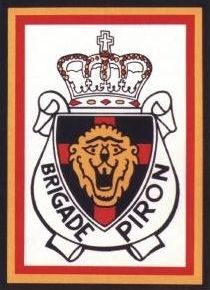Belgian War Grave Silver Wings Charles Goffin Graide
The Graide municipal cemetery contains the grave of First Lieutenant Charles GOFFIN, the first Belgian Silver Wings of the Second World War.
"Charles GOFFIN
Born March 7, 1913
Captain aviator
Cases in Mersch
in commanded service
on September 8, 1944.
9 decorations
American and Belgian
were awarded to him"
Captain Charles Goffin was born on March 5, 1913 in Graide.
After primary school he went to college in Carlsbourg and then to the Royal Belgian Military Academy, where he again excelled in his studies. He graduated and was commissioned as a second lieutenant in the Belgian Cavalry.
Charles' heart, however, was in aviation. In 1938 he was a certified pilot with the Belgian Military Aviation. In 1940 he was promoted to first lieutenant pilot and test pilot
2nd group of the 2nd fighter regiment of the Belgian Air Force in Nivelles.
He soon also became the chief of the Aerial Acrobatics Team of the Belgian Air Force.
When the Nazi invasion of Belgium took place in May 1940, his unit flew Fiat CR 42s, (obsolete biplanes). On May 10, he was flying alone near the Belgian town of Waremme when he spotted a squadron of 12 German Messerschmitt 109s, then the German Luftwaffe's most advanced fighter aircraft. He made full use of his aerial acrobatic skills, caught the Germans by surprise and shot down one of the 109s.
On May 15 he attacked a formation of eight 109s and shot down one again.
As the Belgian army faced defeat on May 19, Charles' squadron flew to France to continue the war with the French air force.
On June 3, he attacked a formation of twelve German bombers near the city of Chartres.
After France surrendered, Charles and his unit were ordered to return to Belgium and surrender to the Germans. They complied with their orders on June 22 and he was imprisoned in the prisoner of war camp at Beverloo, near Leopoldsburg.
After a short time he was able to escape and returned to his home in Graide on foot.
His goal was to go to England and join the British Royal Air Force (RAF).
Since Belgium was occupied by the Nazis, a direct crossing to England was impossible. Via France he reached Spain where he spent a while in Miranda prison. While there, Charles contracted an eye disease that left him nearly blind in his left eye. In May 1942 he found a way to escape again. This time he made it to Gibraltar, from there the British Navy transported him to England.
Due to his bad left eye he was declared medically unfit and could not join the RAF. Major Kronacker, Belgian Air Attaché of the United States Army Air Forces (USAAF) in London, arranged a deal for him. If Charles were to accept enlisting in the USA-AF, the eye exam would not be necessary and he would at least be able to serve. Charles was eager to return to the war and accepted the deal, even though it meant a significant demotion in rank.
On January 8, 1943, Charles officially enlisted as a staff sergeant in the USAAF. He was assigned to the 6th Fighter Wing headquarters of the 8th Fighter Command.
His job was to help plan tactics for the American bombing of Germany, as well as Nazi-occupied Belgium and France.
Charles' work impressed senior USAAF commanders in London. They also knew that he had been an officer and pilot in the Belgian Air Force and they were aware of his flying record in Belgium. After demonstrating his skills in an Auster training aircraft, he was quickly promoted to first lieutenant in the USAAF, with serial number 02044526.
Charles had the unique opportunity to earn his wings twice, once for the Belgians and once for the Americans.
Charles was assigned to the 14th Photo Squadron of the 7th Reconnaissance Group where he flew the Supermarine Spitfire PR.XI MB952. It was not a combat role, but these reconnaissance units were still very important but also very dangerous. While taking their photographs and mapping enemy positions, the reconnaissance pilots were vulnerable to attacks from enemy fighters and anti-aircraft guns.
During his 35th mission, a reconnaissance flight to Saarbrücken, Goffin was shot down by flak near Reckange-les-Mersch (Grand Duchy of Luxembourg).
His body was first brought to Mersch and buried in the local cemetery.
In March 1946 he was transferred to the American military cemetery in Hamm.
On September 12, 1946 he was finally transferred to his native village in Graide (Belgium). The coffin, presented by the USA, stood for greeting in the hall of his parental home.
Charles received two posthumous awards from Major Leboutte of the Belgian Air Force: the Cross of the Order of Leopold with palm and the Belgian War Cross (Croix de la Guerre) with palm. The locals paid tribute to their highly esteemed citizen. After the funeral and speeches he was finally laid to rest in the family grave in Graide. Just before the casket was lowered into the grave, the American soldiers folded the American flag that draped Charles' casket and gave it to his mother. In the years after the war, some Americans who had served with Charles came to Graide to meet his mother and visit his grave.
Sources: Rate one - aviation history
American air museum in Britain
Silver Wings USAF * Belgium
Do you have more information about this location? Inform us!
Source
- Text: TracesOfWar
- Photos: Marie-Christine Vinck





